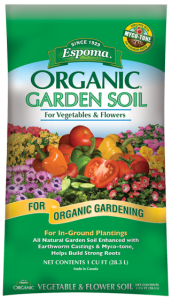Grow Your Own Popcorn
Everyone loves corn on the cob. It’s a staple of summer picnics and barbeques. Everyone loves popcorn too, but most people don’t realize you can grow your own. This is a fun and easy way to get kids involved in gardening. Seeds are relatively large and easy for kids to handle. It’s fast growing and making your own popcorn is a real treat.
You’ll Need Fertile Seed
No, you can’t open a bag of popcorn from the grocery store and plant it. Most store bought popcorn isn’t fertile because of the heating and sterilization processes it undergoes. You’ll need to buy fertile popcorn from your local garden center and there are plenty to choose from on the internet. There are a few heirloom varieties that make great popcorn and are beautiful too, you’ll want to use them for fall decorating.

Strawberry Popcorn?
One heritage variety named ‘Strawberry’ has short cobs, just 2-4 inches long with ruby red kernels. ‘Dakota Black’ has 6-8 inch long cobs with kernels so deep purple they look almost black. Think Halloween decorations! Perhaps the most beautiful is called ‘Glass Gem’. The kernels are yellow, orange, pink, purple, green and orange with a glossy, glass-like transparency. They are as beautiful to look at as they are to eat!
Choose a Bright, Sunny Spot
Plant corn in full sun, with well-draining soil. Mix in some of Espoma’s All-Purpose Garden Soil and Bio-tone Starter Plus to refresh your soil. While these varieties of corn are somewhat smaller than eating corn, they still need plenty of room. Space the seeds, 2 per hole, eight to ten inches apart with 18-24 inches between rows.
They’re Thirsty
Popcorn is a thirsty plant. They will drink about 2 inches of water a week if it doesn’t rain.
Add a layer of mulch after planting to help hold moisture in the soil. Using soaker hoses is a very efficient way to water, very little evaporates and the water is taken up slowly and deeply. You should begin to taper off watering when you near the harvest time, about 100 days.

They’re Hungry!
Feeding your popcorn is just as important as watering it. All corn needs nitrogen. Using a product like Espoma’s Plant-Tone is a great choice. It’s an organic, long lasting, slow release fertilizer. It’s a good idea to feed popcorn when it’s about knee high, when the silk forms or if the leaves start turning yellow. Or, simply feed plants once a month.
Protect the Kernels
If you garden with kids, making a scarecrow is an absolute must! And, it may actually help to keep the birds away. If birds are overly interested in your sprouting corn, you could try using a chicken wire tunnel over each row.
Let the Corn Dry on the Stalks
In a dry autumn, leave the corn on the stalks until they are dry. The husks should be papery and dry and the kernels should feel hard. If it’s a wet fall, harvest the corncobs and bring them indoors to finish drying. Simply pull back the husks and spread them out on newspaper, out of direct sunlight. Popcorn is generally harvested in October, 85-120 days after planting depending on weather and when it was planted.
Pop Quiz
If you’re not sure if your popcorn is dry enough, do a pop test. Put a few kernels of corn into a hot pan with a little bit of oil. If it pops, it’s ready. If it sticks to the pan, it’s not ready and needs to be dried longer. You can either pop your corn the old fashion way, in a pan with oil or put one cob in a paper bag and pop it in the microwave. Keep a close eye on your microwave cooking time, until you know how long it takes for your popcorn to cook. Unpopped popcorn can be stored in an air tight container all winter.
For more gardening fun, check out this video on how to plant a vegetable garden.
Espoma Products for Popcorn











